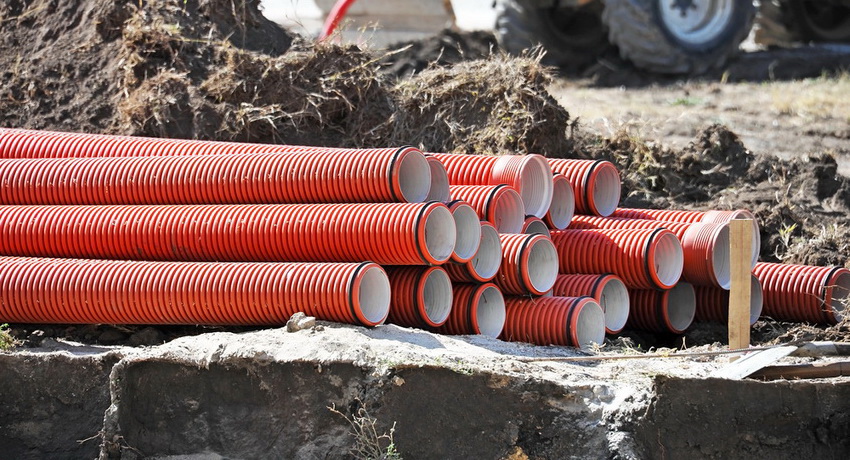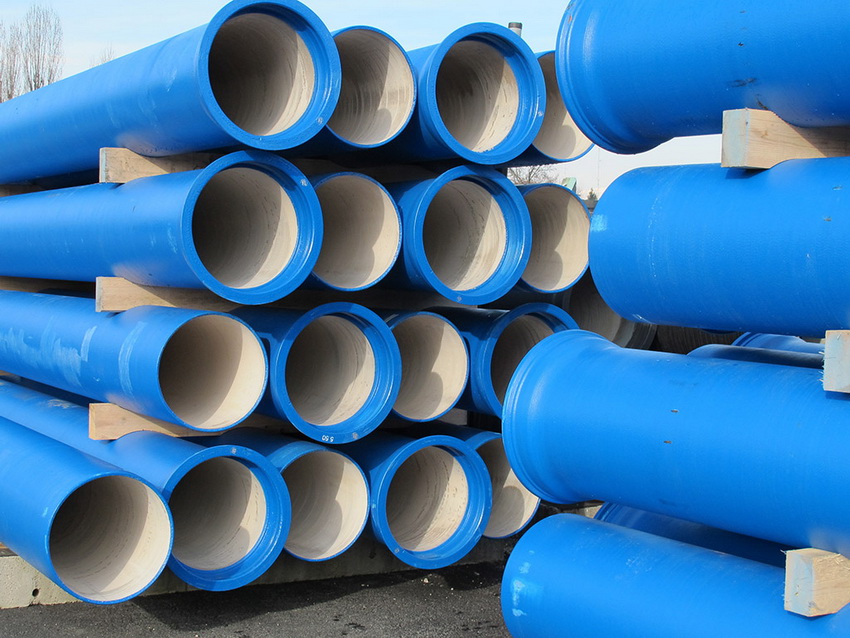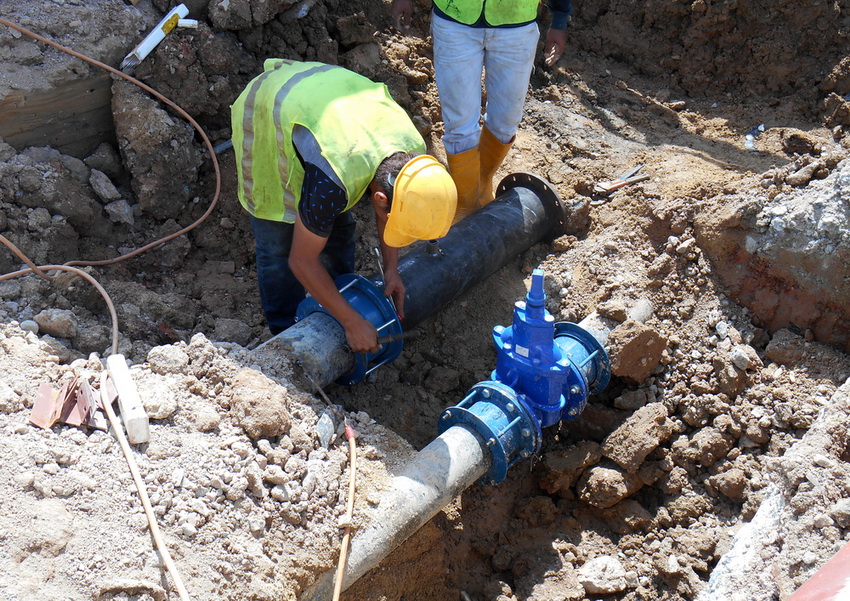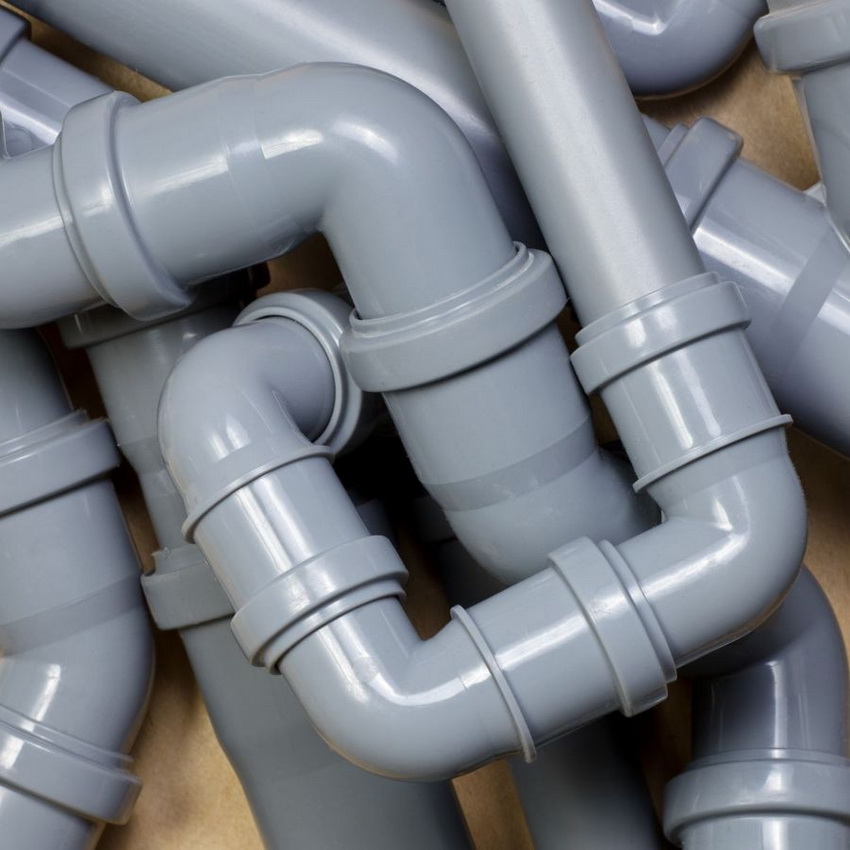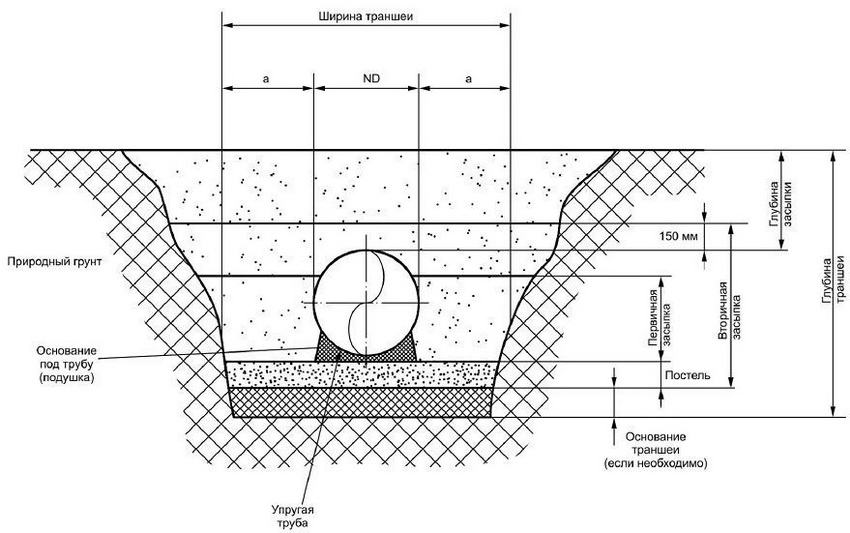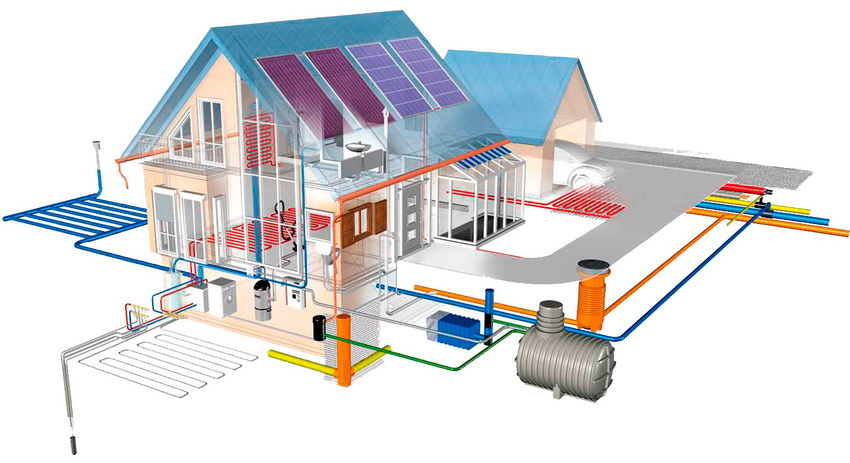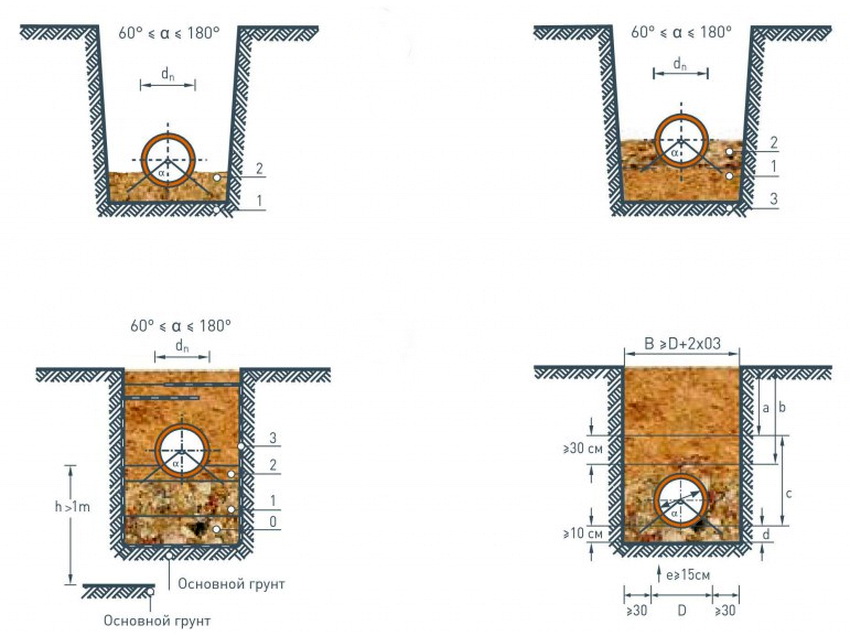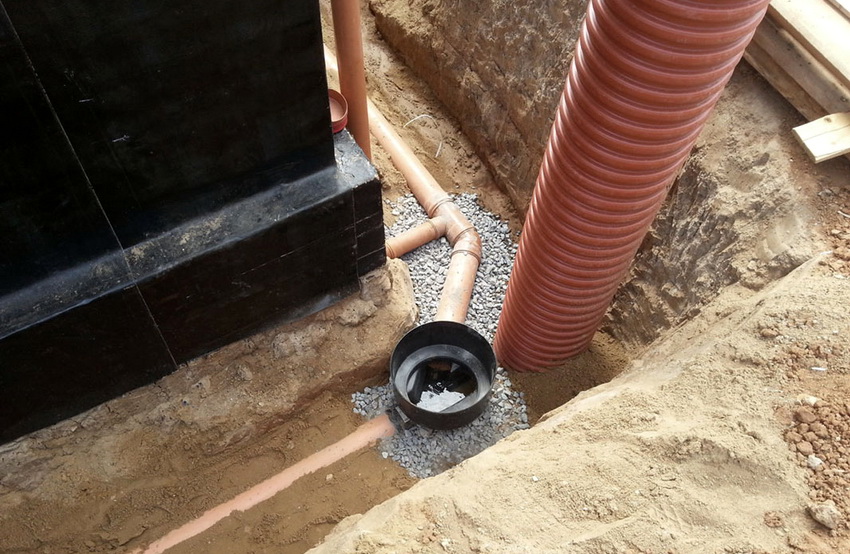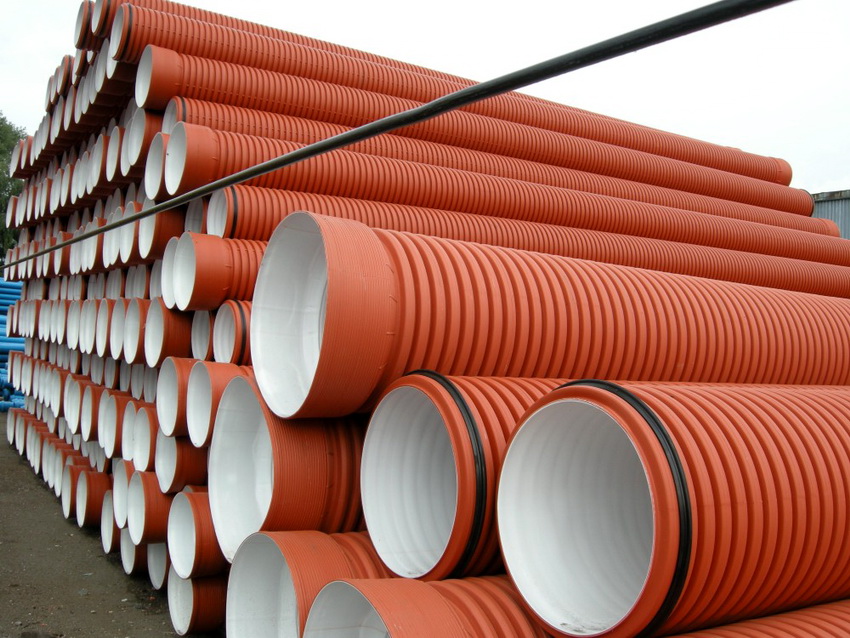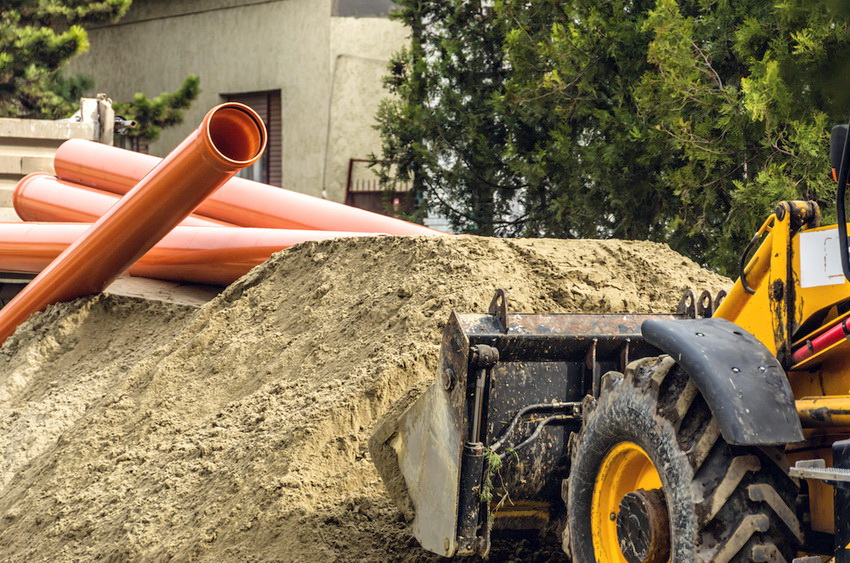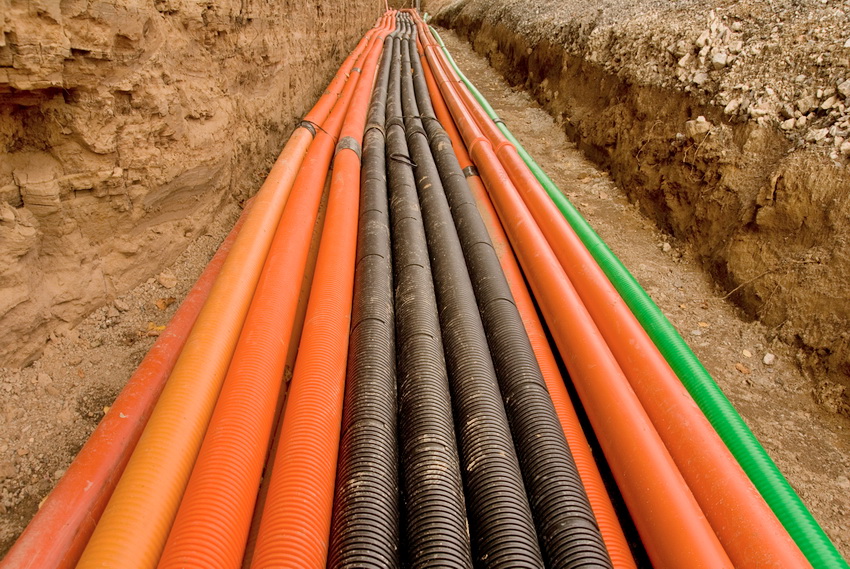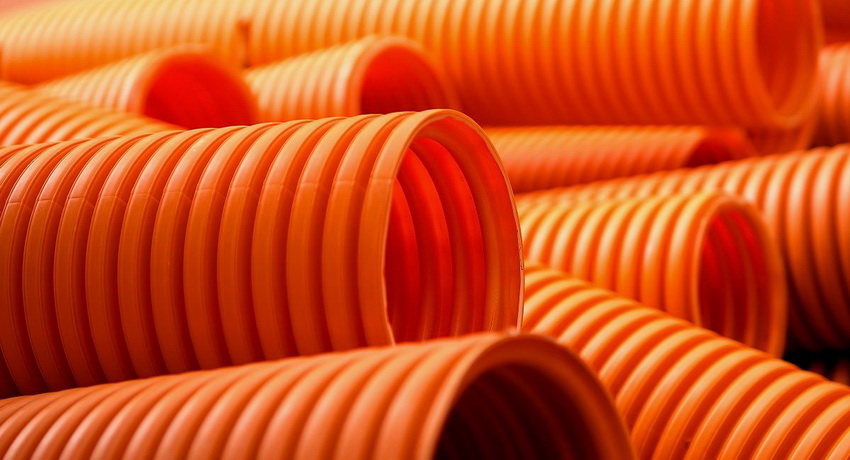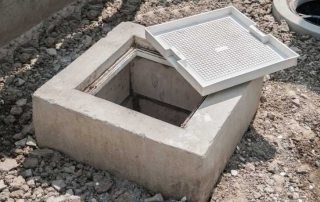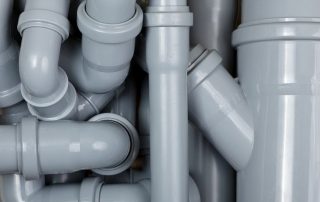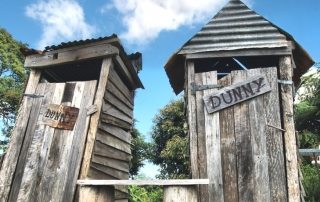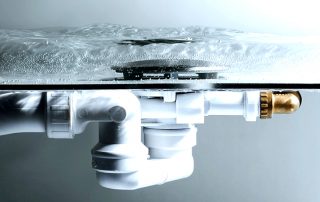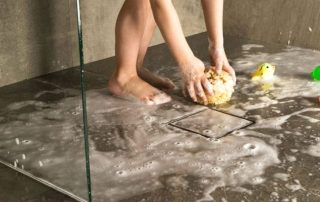From this article you can find out what role sewer pipes play for outdoor sewerage in the arrangement of communication systems. The text contains detailed recommendations for the design and construction of a water supply system, a block system for laying a cable, a storm sewer designed to collect rainwater. In addition, the article touches on the organization of external sewage systems for drains and the heating system.
Content
- 1 Basic information on the installation of heating, water supply, sewerage
- 1.1 Specificity of laying water supply and sewerage networks
- 1.2 Drafting a project for laying water supply and sewerage: important points
- 1.3 Sewer pipes for external sewerage: SNiP requirements
- 1.4 Recommendations for the installation of water supply and sewerage systems
- 1.5 Features of installation of external water supply and sewerage networks
- 2 The use of sewer pipes for external sewerage: price and product features
Basic information on the installation of heating, water supply, sewerage
The presence of communications ensures the comfort of living in a private or country house. Modern man cannot do without these comforts. If you can put up with the lack of the Internet, security and fire alarms, an intercom, then it is impossible to do without the installation of heating, water supply, sewerage systems.
The heating system is aimed at maintaining the optimal temperature in the room and creating comfortable conditions for a person to stay in a room without outerwear. Recommended temperature parameters are in the range from 18 to 23 ° C.
The heating system diagram includes the following components:
- a heat source presented in the form of a centralized system (apartment) or an autonomous boiler (private house);
- heating radiators - structures that transfer heat from water inside the system to the surrounding space;
- pipeline - unites all elements of the heating system (partially provides heat transfer from the carrier to the airspace of the room).
Installation of this system, as well as other communications, is carried out even at the stage of building construction. Nevertheless, at the request of the homeowner, the scheme can be redone for the purpose of improvement. Of course, such a transition is expensive, but construction autonomous system in many ways justifies itself.
Useful advice! For a country or private house, non-radiator heating can be used.A system of water, infrared, cable or overhead floors will maintain optimal climatic conditions in the house, as well as achieve significant savings.
Specificity of laying water supply and sewerage networks
The plumbing system transports water to points of consumption, namely plumbing fixtures. In turn, the sewerage system provides the drainage of the waste liquid outside the building. Both of these systems provide a comfortable stay.
The classification of plumbing systems by the way of organization is as follows:
- the outer part is arranged along the walls of the building;
- the inner section is laid inside the walls, where strobes are made specially for this, after which the communications are hidden under a layer of plaster.
In addition, the plumbing system is classified according to the type of materials used for construction:
- metal-plastic;
- based on steel products;
- plastic.
The pipeline supplies not only cold, but also hot water to a residential building, so the pipes must meet certain temperature requirements.
The main task of the sewerage system is to remove human waste products, which can be in a semi-liquid or liquid state. Subsequently, the effluent is purified and returned to natural reservoirs.
Sewerage according to the execution method is divided into the following types:
- outdoor;
- internal;
- structures with a purification function.
Without the construction of external water supply and sewerage networks, as well as a heating system, it is impossible to imagine comfort, therefore their correct design and organization are the most important issues when arranging a house or apartment.
Drafting a project for laying water supply and sewerage: important points
In order to correctly design a water supply system, it is necessary to take into account the availability of the possibility of connecting to a centralized water supply system. If this is not possible, the problem is solved by building a well on the site. The decision is made on the basis of a geological assessment of the area. It is allowed to drill a well for laying an external sewerage system of an autonomous type.
In addition, other calculations will be required, for example, the volume of daily water consumption. The operating mode and system load depend on this parameter. Based on these data, a certain size of the pipe section and the corresponding equipment are selected. For these purposes, you will need a plan of the site and a residential building, which will display all points of water consumption, as well as the consumption for each of them.
Important! When choosing the depth of laying the pipeline, the level of soil freezing should be taken into account. Alternatively, you can use the insulation of the outdoor sewer pipes with a heating cable.
Next, the layout of the pipeline lines intended for the transportation of hot and cold water is applied to the plan, the type of connection is selected, which can be sequential or collector.
In conclusion, the plan includes all the nodal components of the system:
- branching;
- turns;
- connections;
- taps.
The diagram should also indicate the equipment that performs heating, purification or pumping of water.
Drafting a project for laying sewage under the foundation and inside the building is carried out in a similar way. In this case, attention is paid to the end point of the discharge in the form of an autonomous treatment equipment or a central riser, the places where plumbing and water consumption devices are installed.
Sewer pipes for external sewerage: SNiP requirements
To collect wastewater, elements with a cross-sectional size of 50 mm are laid in the system design.For internal risers and outlets of waste fluid from toilets, elements similar in size to external ones are most often used - sewer pipes 110 mm.
It is imperative to equip the system with revision elements, both in the building itself and on the external highway. According to construction technology, such wells it is recommended to be placed on straight sections of the pipeline, the length of which exceeds 15 m. The same elements are needed in the areas where the pipeline turns. For the construction of the system, fittings and other parts of the additional type are used, which allow to assemble the sewage system.
For systems inside which water moves by gravity, there are certain installation rules. According to the requirements of SNiP, the slope of the external sewage system by 1 meter, depending on the remoteness of the collector, can vary within 5-15 cm.
Important! It is not recommended to exceed the slope mark of 15 cm per 1 m of the pipeline, as the system will cease to function normally. The same result will be with insufficient inclination.
Recommendations for the installation of water supply and sewerage systems
In cases where the pipeline under the project runs in areas where digging is impossible, a puncture is made in the ground.
Various tools are suitable for these purposes, many of which can be found in any household:
- shovel;
- Boer;
- scrap, etc.
If large construction is planned under roads and in other difficult areas, special equipment is used to perform punctures. Some projects allow for crossings between the sewer and water mains. In such cases, the installation of metal sleeves is carried out at the points where the pipes intersect. The size of this element is selected taking into account the type of soil on the site. For chernozem and clayey soil, sleeves 5 m long are suitable. For sandy soil, it is recommended to take elements 10 m long in each direction from the point where the pipeline intersects.
At the points of intersection of highways, the installation of the water supply system should be carried out about 40 cm above the sewer level.If the pipes are located in parallel, the minimum allowable distance between them is 1.5 m.In this case, it is also recommended to install the water supply system 40 cm higher than the sewer runs ... Requirements are also put forward for the area of entering communications into a residential building. There must be at least 1.5 m between the water supply and the sewerage system or gas pipeline.
Features of installation of external water supply and sewerage networks
For the installation of any of these systems, it will be necessary, in accordance with the project, to carry out earthworks, forming trenches for laying pipes. The outer section of the water supply system must connect the source of water where it is collected and the point of entry of the line into the building. The optimum depth of the trench is within 1.5-2.5 m.From the level of freezing of the soil, it is necessary to bury the pipeline at least 0.5 m.A sand and gravel cushion is formed at the bottom, after which it is rammed, and in areas where there will be to locate pipe connections, it is necessary to dig pits.
Note! The dimensions of sewer pipes for external sewerage are selected taking into account the volume of water consumption and the length of the line. It is recommended to select the diameter of the elements with a margin.
The optimal size of the cross-section of water pipes:
| External line length, m | Recommended diameter, mm |
| 10 | 25 |
| 30 | 32 |
| over 30 | 38 |
The type of pipe connection depends on their material of manufacture. For the installation of the water supply system, the methods of soldering, welding, pipe coupling, etc. are used. If there is a need to install shut-off valves, then a manhole is formed at the installation site.
To lay the sewage system, a flat trench should be dug between the area where the system will enter the room and the cesspool.Pipes should lie 50 cm deeper than the level of soil freezing. If the scheme provides for turns of the highway, then revision wells must be installed in these places. To do this, a pit is dug and a sand cushion 10 cm thick is formed at its bottom.If the sewer pipeline is large, inspection wells are mounted in steps of 10-12 m.
For the installation of sewers, PVC products and cast iron pipes are most often used. To drain drains from the bathroom and washbasin a pipe with a cross-section of 50 mm will suffice. For plumbing fixtures, for example, a toilet, it is better to take products with a diameter of 110-160 mm.
The use of sewer pipes for external sewerage: price and product features
The choice of pipes for the installation of sewerage and water supply systems is based on various parameters, including safety, degree of strength and reliability, recommended operating conditions and cost.
The following types of products are used for plumbing:
- plastic pipes based on polymers (polypropylene, PVC, PVC-U, etc.);
- metal-plastic elements with thin-layer reinforcement using metal enclosed on both sides in a plastic sheath;
- metal pipes (copper, steel).
For products intended for the arrangement of sewage systems, similar requirements are put forward. In addition, pipes must be resistant to the influence of aggressive media.
The following types of products are used for sewerage:
- polymer-based plastic pipes (PVC);
- cast iron elements;
- ceramic pipes;
- products made of asbestos cement.
Polymer products show themselves well during operation, therefore, in most cases, these types of pipes are used for such work.
Useful advice! The plastic has low sound insulation. To ensure the comfort of operation, it is recommended to wrap the products in the process of installing the external sewage pipes in a sound-insulating material.
Features and prices of sewer pipes for outdoor sewerage: PVC and PVC-U
PVC pipes are widely used for the organization of communication systems, as well as the restoration of existing highways. Products are suitable for moving any kind of waste. They are suitable as comfortable and practical drain pipes water from the roof and subsequent transportation of rainwater, as well as waste liquid from industrial and household facilities.
Related article:
Drain pipe 110 in filter: geotextile and coconut fiber
Geotextiles and coconut fiber as filter media. Characteristics of various types of pipes for the organization of storm sewers.
The advantages of PVC products:
- frost resistance;
- light weight;
- simple installation system;
- there is no need to use special equipment when working with pipes;
- resistance to corrosive effects;
- wear resistance.
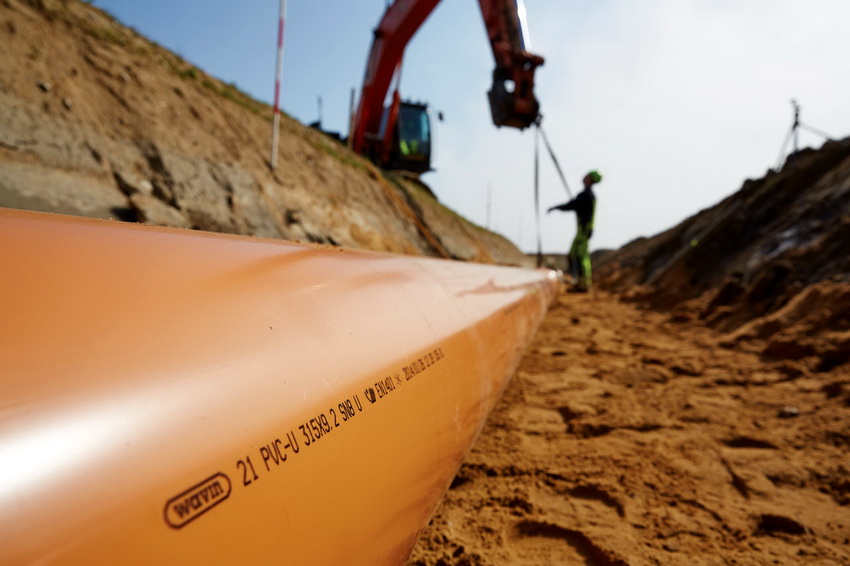
PVC pipes excellently proved themselves in the operation of sewerage and water supply systems
In households, the use of PVC-U pipes for external sewerage is widespread. Unlike PVC products, which can withstand temperatures up to 60 ° C, these elements are rated for 45 ° C.
Scope of PVC-U products:
- as a casing when forming wells (alternative to steel elements);
- for the arrangement of the storm sewer system and other utilities;
- piping systems for household and industrial use;
- for laying cables in block sewers as a protective sheath (flat and corrugated elements).
Average prices for PVC-U pipes SDR 41 PN6,3:
| Pipe length, m | Section size, mm | price, rub. |
| 6,1 | 90 | 525 |
| 6,12 | 110 | 770 |
| 6,14 | 160 | 1650 |
| 6,16 | 225 | 3170 |
| 6,19 | 315 | 6210 |
| 6,22 | 400 | 10270 |
| 6,26 | 500 | 16150 |
Prices for Korsis pipes for cable and household wastewater systems, rainwater treatment plants:
| Section size, mm | price, rub. (SN6) | price, rub. (SN8) |
| 110 | 170 | 180 |
| 160 | 300 | 320 |
| 200 | 410 | 430 |
| 250 | 625 | 660 |
| 315 | 950 | 1000 |
| 400 | 1480 | 1560 |
| 500 | 2250 | 2365 |
Note! The table shows the prices for Korsis pipes without a socket 1 m long.
Recommendations for the installation of cable ducts with your own hands
Cable duct is a system that serves to place electrical and telephone cables underground. The depth of the channels placement depends on the material of the pipes production and can vary within 0.4-2 m. Concrete pipes are laid the deepest. When working with plastic products, you can limit yourself to the minimum permissible parameter.
The optimal installation depth of the system also depends on the condition of the coating in the construction area. For pedestrian areas, you can take the minimum depth. If the system runs under a motorway or tramway, then the cable should be laid in the cable duct at maximum depth. To prevent the accumulation of water, add 4 mm per 1 m of the pipeline to the calculations for the slope of the communication.
There must be straight pipes in the sections between the wells. The maximum permissible deviation per 1 m of the pipeline is 1 cm. The diagram must include inspection chambers located at every 25 m of the pipeline. If the cable will be laid in collectors for disposal to the sewage treatment system or in the basement, you should abandon the use of pipes. In this case, consoles are used.
The standard size of the cross-section of pipes for the cable system is 15 cm, however, it would be more rational to use products with a diameter of 10 cm. It is not recommended to place cables intended for different purposes in one pipe.
Recommendations for the installation of storm sewers in the country with their own hands
To correctly calculate and organize storm sewers, you need to consider the following information:
- The average amount of precipitation recorded in the region by meteorologists.
- Frequency of rainfall and snow loads.
- Waste collection area.
- Chemical and physical parameters of the soil.
- Placement of all underground utilities.
At the first stage, a water collection gutter is equipped and drain pipes for the roof are installed. After that, you can organize a linear or point sewage system. On sale you can find all the elements for the construction of storm drains. In addition to standard parts, sand traps, siphons, plugs may be required.
The presence of storm, cable and domestic sewerage, as well as plumbing and heating systems is the key to the comfort of living in the house. There is only one way to avoid unpleasant consequences when installing these communications with your own hands - by choosing the right materials, and accurately performing the calculations.
